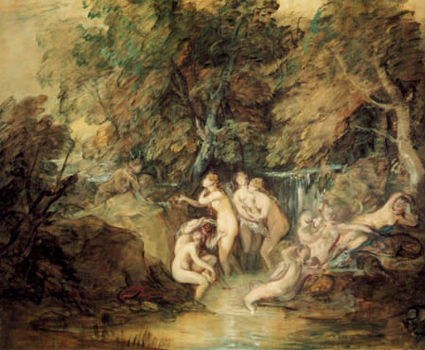"Gainsborough’s Diana and Actaeon Revealed", at Gainsborough’s House. By Andrew Graham-Dixon.
This year marks the fiftieth anniversary of the opening of Gainsborough’s House in Sudbury, Suffolk. One of Britain’s most charming smaller museums, it occupies what was once the childhood home of Thomas Gainsborough, the most mercurially gifted English portrait painter of the eighteenth century. This summer the museum’s usual displays, of Gainsborough’s portraits and landscapes, have been enhanced by a modest but enthralling exhibition which focusses on perhaps the greatest and certainly the most unusual of all the artist’s paintings: a large mythological picture on the theme of Diana and Actaeon, which he created in the final years of his life. The cost of organising the various loans was covered by a generous act of private sponsorship on the part of Sir Denis Mahon, one of the most brilliant art historians of recent times, who died, at the age of 100, just a matter of weeks before the exhibition opened. So the show is a memorial to his discerning eye, as well as to the restless genius of Gainsborough.
Diana and Actaeon is one of the painter’s least well known works. It is owned by the Queen, who has lent it for this occasion, but has been seen in public on relatively few occasions since its purchase in 1797 by her ancestor, George IV, for the mindbogglingly tiny sum of two pounds and three shillings. The picture was inspired by a passage in Book III of the Roman author Ovid’s long poem, Metamorphoses, which tells of the transformation suffered by the huntsman, Actaeon, at the hands of the goddess Diana. One day, while hunting in a gentle wooded valley sacred to the godess, Actaeon stumbled upon her while she was bathing in a stream with her handmaidens. Intoxicated by...


